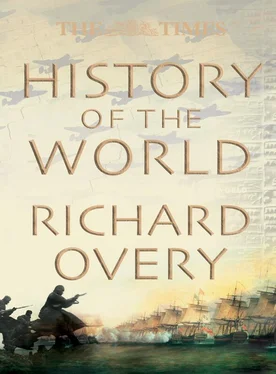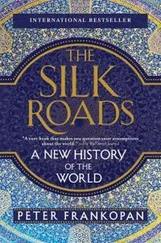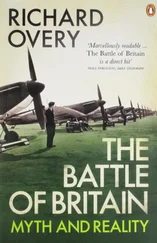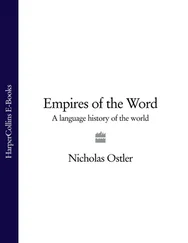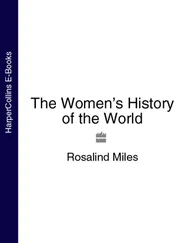From at least 6000 BC village settlements with evidence for rice-growing and pottery-making have been found in southern China, but perhaps because there has been relatively little research on early village sites in southeast Asia no settlements of rice farmers older than 3000 BC have been found in northern Vietnam and inland areas of Thailand, although Phung Nguyen in the Red River valley of Vietnam and Ban Chiang and Non Nok Tha in northern Thailand have all been well investigated. But the best evidence for late Neolithic occupation of southeast Asia comes from Khok Phanom Di, a 7m (23ft)-deep village mound occupying about 5ha (12 acres) near the coast southeast of modern-day Bangkok. Here over 150 burials and rich occupation layers dated to between 2000 and 1400 BC provide evidence of intensive exploitation of the sea and adjacent mangrove forests, and the beginnings of social differentiation.
METAL TECHNOLOGIES
From early in the 2nd millennium BC bronze tools were added to the existing stone, bone and antler toolkits in central and northeast Thailand and northern Vietnam, where we can refer to a true Bronze Age from about 1500 to 500 BC. The best known Bronze Age locations in Thailand are Ban Chiang and Ban Na Di in the northeast and Nil Kham Haeng near Lopburi in the Chao Phraya valley. In Vietnam more sites of this phase are known including Dong Dau, Viet Khe, Cau Chan, Trang Khen, Lang Vac and Dong Son on the Ma river where a rich burial ground has been excavated since the 1920s and given its name to the late Bronze Age culture of the region, best known for its great bronze drums. These are widely distributed from Yunnan in southwest China to Thailand, Malaya and many parts of Indonesia where they seem to have been traded in antiquity as objects of great prestige and magical power.
INFLUENCE FROM INDIA
In western and peninsular Thailand, Malaysia, Burma (Myanmar), Indonesia and the Philippines bronze metallurgy seems to have arrived only with iron after about 500 BC and to have been introduced from India as maritime trade routes were extended across the Bay of Bengal. In graves of this period are found glass and semi-precious stone jewellery of great aesthetic and technical sophistication together with iron tools and weapons, while in inland areas large moated-mound settlements and well laid-out cemeteries mark the emergence of powerful chiefdoms whose rulers, attracted by the rituals and prestige of Indian culture, soon adapted these to enhance their own status and power. Sites such as Ban Don Ta Phet, Khao Jamook, Khuan Lukpad, Ban Prasat, Non U-Loke, Ban Lum Khao and Ban Chieng Hian in Thailand, and Giong Ca Vo, Giong Phet, Doc Chua, Long Giao, Hang Gon and Hau Xa in southern and central Vietnam have all produced rich examples from this last stage of prehistoric culture on the mainland of southeast Asia, as have Plawangan and Lamongan in Java and Gilimanuk and Sembiran in Bali, where glass beads imported from south India and a potsherd with a Brahmi inscription serve to mark the end of prehistory.
About 40,000 years ago, when lower sea levels linked Tasmania, Australia and New Guinea, man first ventured onto Sahul, the greater Australian continent. That journey from a southeast Asian homeland was a pioneering one, as it involved at least one major sea crossing. The original Australians were therefore among the world’s earliest mariners.
PLEISTOCENE AUSTRALIA
The strange new world that greeted these newcomers was of enormous size, and ranged from tropical north to temperate south. Some of the edible plants found in more northerly latitudes were related to those of Asia and were therefore familiar; but this was not so of the animals. In addition to the mammals that have survived until today, there was a bewildering assortment of giant forms: 3m (10ft) tall kangaroos, various enormous ox-like beasts, a large native lion and rangy, ostrich-like birds. This megafauna was a rich and easily available food source but it was reduced and eventually killed off by the advancing human tide.
Consequently, it was on the plentiful supply of fish and shellfish along the coasts and in the rivers that the newcomers focused their attention, and it was in these areas of Australia that the first human settlements were concentrated. Most of the sites are lost to us, for between 40,000 and 5000 years ago the sea level was lower than it is at present, and the sites now lie offshore, on the continental shelf.
The Pleistocene inhabitants of Australia used red ochre to create elaborate rock paintings, thus laying the foundations of a rich and long-lived Aboriginal custom. Their stone core implements and crude scrapers belong to what is known as the Australian Core Tool Tradition. This tradition, which underwent remarkably little change in more than 40,000 years, is pan-Australian, but there are a number of regional elements that have links with New Guinea and southeast Asia. One of these is the edge-ground axe, which has been dated to 22,000 years in Arnhem Land. Similar ground-stone tools found in Japan are up to 30,000 years old. Ground-stone tools were ultimately developed in most other parts of the world also, but only in a much later period.
ABORIGINAL SOCIETY
About 5000 years ago, following the end of the last ice age, the sea rose to its present level; and while Aboriginal settlements were still concentrated along the coasts there was a rapid increase in the exploitation of inland resources. At about this time a range of small, finely finished flake implements especially developed for hafting sharp tools, and known as the Australian Small Tool Tradition, appeared across the continent. The dingo was also introduced.
Political, economic and religious development continued and by the time the first European settlement arrived in the 18th century, there were about 750,000 Aborigines living in around 500 tribal territories. Although the Aborigines’ way of life was still based on hunting and gathering (they never became full-scale agriculturists) they had developed very intricate and finely balanced relationships with their environment. In desert areas, small nomadic groups ranged over thousands of square kilometres, while in richer parts of the continent there were settled, permanent villages. Fish traps were constructed, grasses and tubers were replanted to assist nature, and fire was used systematically to burn old vegetation and encourage the growth of rich new plant cover and the abundant new game it attracted. Rare goods, such as ceremonial axes, shells and ochres, were traded from one side of the vast continent to the other, as were stories down the accompanying “song lines”.
TO THE 1700S
MELANESIA AND POLYNESIA
Melanesia and Polynesia were first settled, from around 50,000 years ago, by modern people from southeast Asia. These adventurous people were the world’s first great blue-water sailors and seaborne colonists. They moved in waves, initially into New Guinea and its adjacent islands, and over time they gave birth to the Melanesian and then the Polynesian traditions. There were many great migrations, and the furthermost Pacific islands were reached as late as AD 750.
The Pacific islanders’ ancient ancestors, the early people or Homo erectus , lived in southeast Asia two million years ago. During this period, the Pleistocene, sea levels meant that the land mass of southeast Asia included much of the western part of what is now the archipelago. Remains of these people have been found in Java, part of the ancient continent known as the Sunda shelf, which is, for the most part, submerged today.
FIRST MIGRANTS
Around 50,000 years ago, Homo sapiens , or modern people, arrived in the region. These people were hunters and gatherers who drifted the short distance to the ancient continent of Sahul (modern-day Melanesia, which at the time was attached to Australia) around 40,000 years ago. Skulls of Homo sapiens found in the area date back to this time. These people had settled the New Guinea highlands by 25,000 years ago. Eight thousand years ago rising seas following the end of the last ice age caused the separation of New Guinea from the continent of Australia.
Читать дальше
